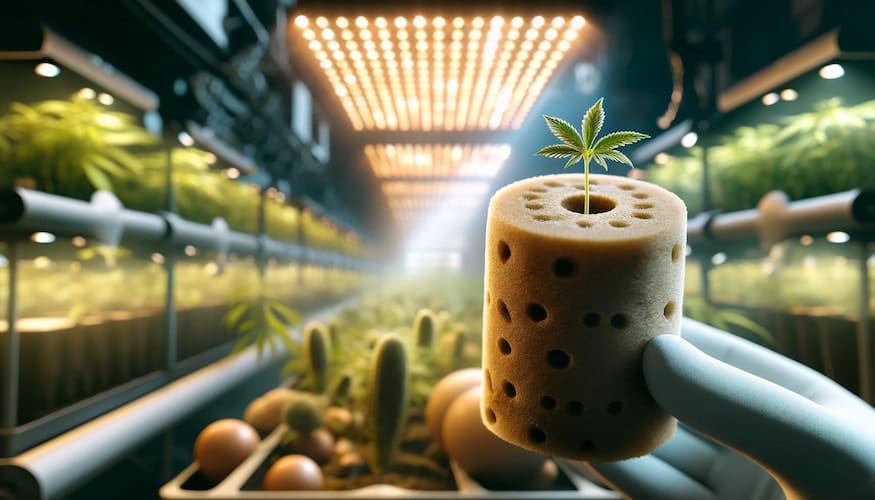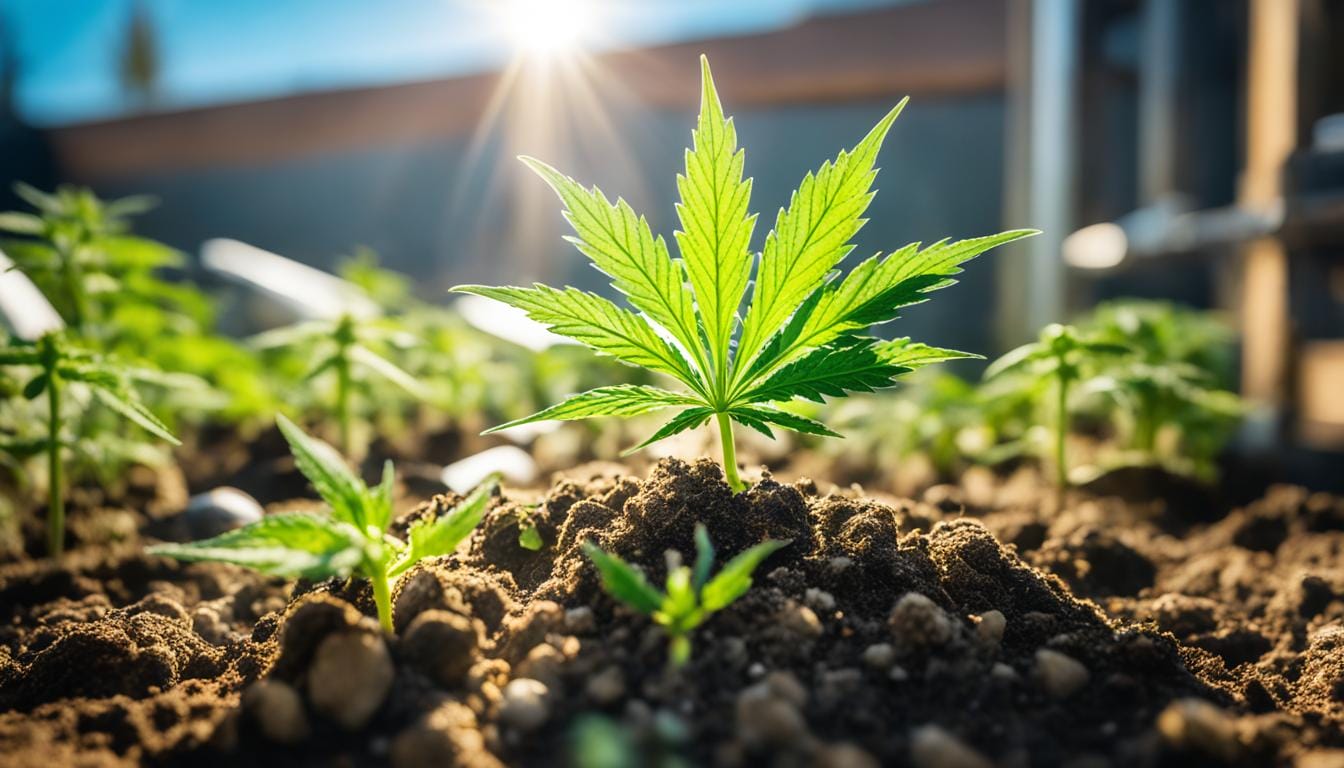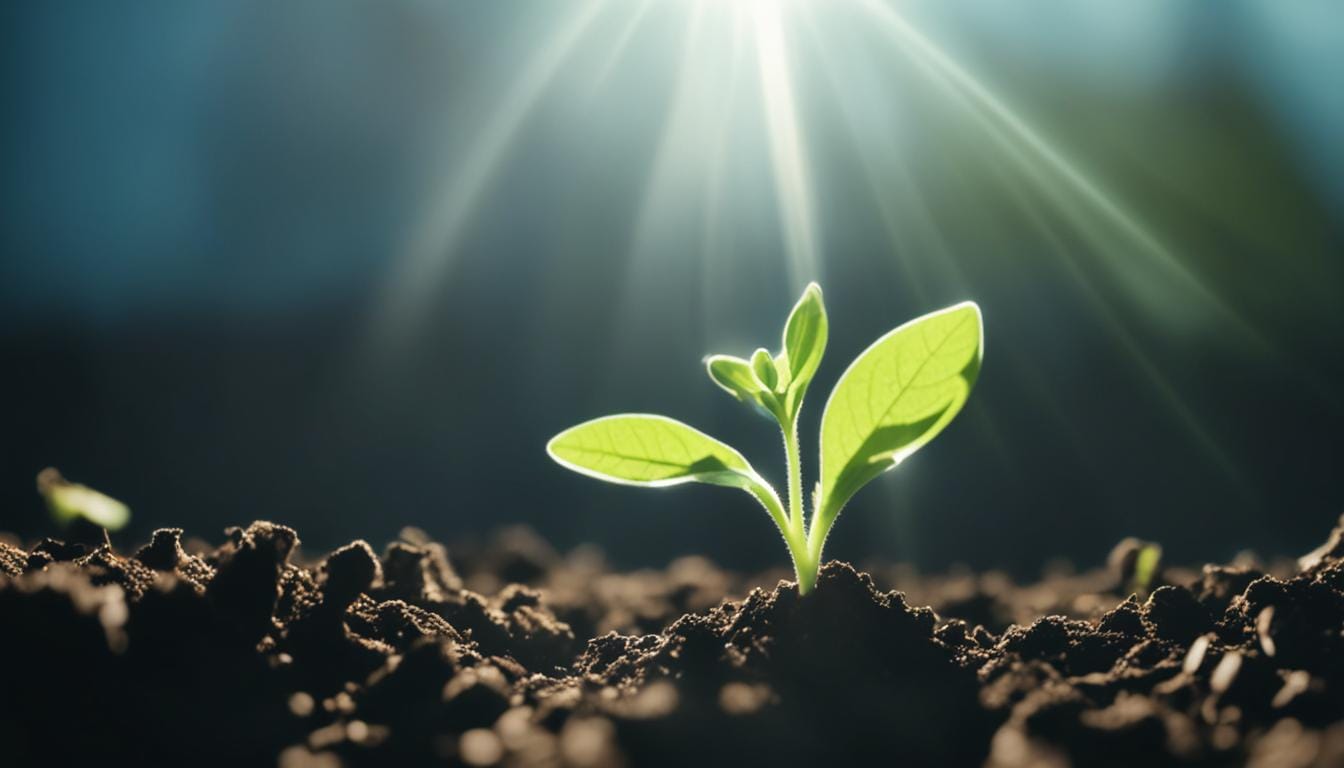Unlock the secret to successful seedlings with our guide on Using Starter Cubes and Plugs – your first step towards a thriving garden!
Pre-Germination Techniques for Successful Planting
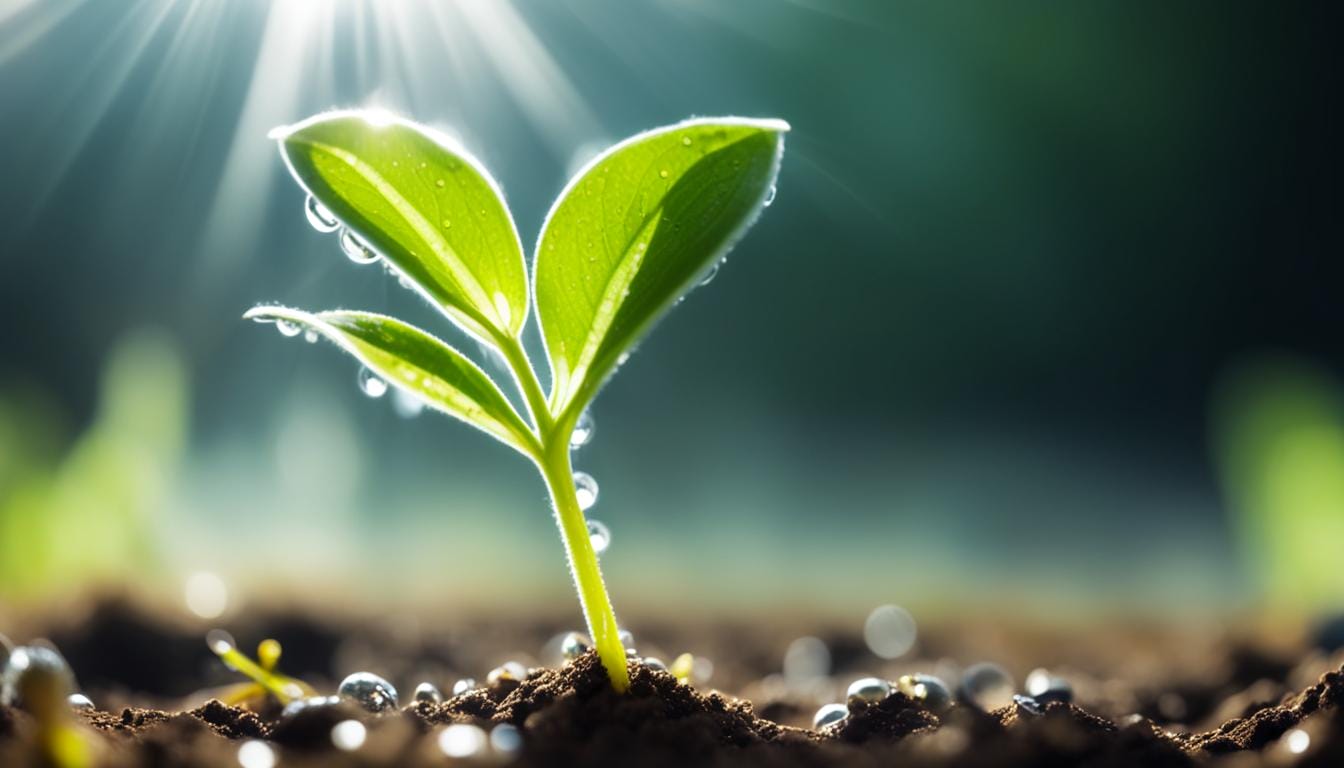
Are you tired of waiting anxiously to see your seeds sprout? Do you wish there was a way to enhance their germination process and ensure healthy growth? Look no further, because SeedsHereNow.com has the answers you’ve been searching for. In this article, we unveil the secrets of pre-germination techniques that can unlock the full potential of your seeds. Get ready to revolutionize your planting game and witness thriving plants like never before.
From seed priming to scarification, soaking to stratification, we explore a range of pre-germination methods that will set your seeds up for success. Discover the science behind each technique and learn how to apply them effectively to boost germination rates. Say goodbye to inconsistent or lackluster sprouting and hello to robust, healthy plants that will make your garden the envy of all.
Key Takeaways:
- Effective pre-germination techniques can significantly improve the success of your planting efforts.
- Seed priming enables quicker and more uniform germination, giving your plants a competitive edge.
- Seed scarification helps overcome seed dormancy and enhances germination rates.
- Seed soaking initiates seed imbibition and activates essential enzymes for healthy growth.
- Seed stratification unlocks the potential of dormant seeds and promotes vigorous germination.
Understanding Seed Priming
Seed priming is a crucial pre-germination technique that can significantly enhance the germination process of your seeds. By utilizing seed priming methods, you can accelerate and achieve more uniform germination, giving your plants a head start in their growth journey.
There are various seed priming methods available, each with its own benefits and applications. Let’s explore some popular techniques:
Hydropriming
Hydropriming involves soaking seeds in water for a specific duration to initiate hydration. This process activates enzymes, triggers metabolic changes, and prepares the seeds for germination. Hydropriming is particularly effective for crops such as lettuce, tomatoes, and cucumbers, resulting in improved germination rates and seedling vigor.
Osmopriming
Osmopriming is a technique that utilizes osmotic solutions, such as salt or sugar solutions, to enhance seed hydration. By exposing seeds to a controlled osmotic environment, osmopriming promotes water uptake, triggers physiological changes, and accelerates germination. Osmopriming is commonly used for crops like maize, rice, and wheat.
Priming Enhancers
In addition to the traditional seed priming methods, priming enhancers such as biostimulants or plant growth regulators (PGRs) can be used to further optimize seed priming. These enhancers enhance seed quality, stimulate germination, and improve the overall vigor and resilience of seedlings.
When applying seed priming techniques, it’s essential to follow specific protocols and guidelines to ensure optimal results. Factors such as duration, temperature, and concentration need to be carefully adjusted to match the requirements of different seeds and plant varieties.
By incorporating seed priming into your pre-germination practices, you can unlock the full potential of your seeds and create favorable conditions for healthier and more robust plant growth.
| Seed Priming Technique | Application |
|---|---|
| Hydropriming | Lettuce, tomatoes, cucumbers |
| Osmopriming | Maize, rice, wheat |
| Priming Enhancers | All crops |
Seed Scarification for Increased Germination Rates
Seed scarification is a proven technique that can significantly enhance germination rates by breaking seed dormancy. By employing scarification, you can empower your seeds to overcome barriers and thrive, ensuring a successful planting experience.
Scarification involves physically or chemically treating the seed coat to create small openings, allowing moisture to penetrate and initiate the germination process. This technique is particularly useful for seeds with hard, impermeable coats that inhibit proper water absorption.
Scarification helps seeds overcome dormancy, ensuring a higher germination rate.
There are various scarification methods available, each with its own advantages and considerations. Mechanical scarification involves using tools or techniques to physically scratch, nick, or abrade the hard seed coat. This method can be accomplished by gently rubbing the seeds with sandpaper or a file, carefully cutting or notching the coat, or even soaking the seeds in hot water.
On the other hand, chemical scarification utilizes specific substances to soften or weaken the seed coat. Acidic solutions such as sulfuric acid or hydrogen peroxide can be used to treat the seeds, enabling the penetration of water to kick-start germination.
Benefits of Seed Scarification
- Increased germination rates
- Improved uniformity in seedling emergence
- Acceleration of the germination process
- Ability to overcome seed coat imperfections or hardness
- Enhanced plant vigor and growth potential
It’s crucial to follow proper safety precautions when performing seed scarification, especially when using chemical methods. Always wear protective gloves and goggles, work in a well-ventilated area, and carefully follow the instructions provided for the specific scarification approach you choose.
“Seed scarification breaks dormancy barriers, allowing your seeds to unlock their full potential.”
By implementing seed scarification techniques, you can optimize the germination process and set your seeds up for success. Stay tuned to SeedsHereNow.com to explore other pre-germination techniques and unlock the secrets to successful planting.
Maximizing Success Through Seed Soaking
Unlock the full potential of your seeds with the time-tested method of seed soaking. This pre-germination technique is known to improve germination rates and enhance seedling vigor. By immersing your seeds in water, you initiate a crucial process called seed imbibition, where the seeds absorb water and prepare for growth.
During seed soaking, water permeates the seed coat, triggering vital enzymatic activities that kickstart germination. This process activates essential enzymes responsible for breaking down stored nutrients, facilitating the emergence of a healthy seedling.
When embarking on seed soaking, certain factors must be considered to ensure optimal results:
- Soaking duration: The length of time seeds should be soaked varies depending on the plant species. Research the specific soaking requirements for your seeds to maximize their potential.
- Water temperature: The temperature of the water used for soaking can influence the effectiveness of the process. Some seeds benefit from cold water soaking, while others prefer warm water. Understand the preferences of your seeds to achieve the desired outcomes.
- Seed viability: It’s essential to use high-quality, viable seeds for soaking. Seeds that are too old or damaged may have lower germination rates, irrespective of soaking techniques.
By incorporating seed soaking into your pre-germination strategy, you set the stage for successful planting and vigorous plant growth.
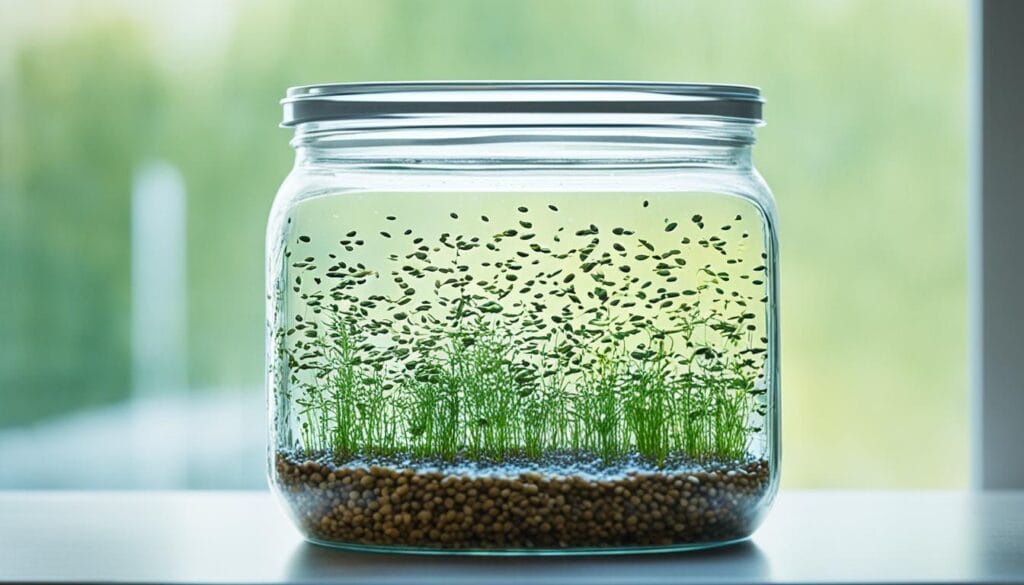
Expert Tip:
Seed soaking is particularly beneficial for larger seeds such as beans, peas, and corn. The increased water absorption can help jumpstart the germination process, resulting in faster and more robust seedlings.
Next, we’ll explore the technique of seed stratification and how it helps overcome seed dormancy. Discover the optimal conditions for each stratification method and unlock the full potential of your seeds.
Unlocking Seeds’ Potential With Stratification
Seed stratification is a must-know method when it comes to successful pre-germination techniques. This method helps overcome seed dormancy and paves the way for healthier and more vigorous plants. Stratification ensures optimal growth and development by simulating the natural conditions that seeds require for germination.
There are three main types of seed stratification: cold stratification, warm stratification, and moist stratification. Each approach has its own set of optimal conditions and benefits.
Cold Stratification
Cold stratification involves exposing seeds to prolonged cold temperatures, mimicking winter conditions. This process breaks down the seed coat and triggers the germination process. It is particularly effective for seeds of plants native to cold climates, such as some tree species.
The optimal temperature for cold stratification varies depending on the seed type. For example, some seeds require temperatures between 32°F and 41°F (0°C and 5°C), while others may need temperatures as low as 0°F (-18°C). Duration also varies, ranging from a few weeks to several months.
Warm Stratification
Warm stratification involves subjecting seeds to warm temperatures to simulate the conditions they would experience during the warmer seasons. This technique is effective for plants that naturally germinate after winter dormancy or those native to warmer climates.
The optimal temperature for warm stratification generally ranges from 68°F to 86°F (20°C to 30°C). The duration varies depending on the seed type, typically spanning several weeks to a couple of months.
Moist Stratification
Moist stratification involves exposing seeds to a combination of moist conditions and cooler temperatures. This technique accelerates the breakdown of the seed coat and stimulates germination. Moist stratification is particularly beneficial for seeds that require higher humidity for successful germination.
The optimal temperature for moist stratification is typically around 41°F (5°C). The duration varies depending on the seed type, ranging from a few weeks to a couple of months.
By understanding the nuances of each stratification method, you can effectively leverage this technique to unlock the full potential of your seeds. Consider the specific requirements of your seeds and the natural conditions they would encounter in their native habitats.
Stratification is a powerful tool in your pre-germination arsenal. It allows you to bridge the gap between the natural dormancy period and optimal germination conditions. By providing the right temperature and moisture balance, you lay the groundwork for strong, robust plants.
Incorporate seed stratification into your pre-germination routine to break seed dormancy and fast-track germination. With the help of this technique, you can unleash the true potential of your seeds and set the stage for successful planting.
| Stratification Method | Temperature Range | Duration |
|---|---|---|
| Cold Stratification | 32°F – 41°F (0°C – 5°C) | Varies (weeks to months) |
| Warm Stratification | 68°F – 86°F (20°C – 30°C) | Varies (weeks to months) |
| Moist Stratification | 41°F (5°C) | Varies (weeks to months) |
Breaking Seed Dormancy for Improved Germination
Seed dormancy can be a frustrating obstacle when it comes to successful germination. However, with the right techniques, you can break seed dormancy and unlock the full potential of your seeds. In this section, we will explore various methods that disrupt seed dormancy patterns and enhance germination success.
Scarification: A Powerful Seed Dormancy Break Technique
One effective method to break seed dormancy is scarification. By mechanically or chemically damaging the seed coat, scarification allows water and oxygen to penetrate the seed, initiating germination. Here are some popular scarification techniques:
- Manual Scarification: Gently nick the seed coat with a sharp knife or sandpaper to promote water absorption.
- Hot Water Scarification: Briefly soak the seeds in hot water, ensuring you follow specific temperature guidelines for different seed varieties.
- Acid Scarification: Treat seeds with a diluted acid solution, such as sulfuric acid, to soften the seed coat.
These scarification methods can effectively break seed dormancy and improve germination rates, giving your seeds a better chance to thrive.
Stratification: Challenging Dormancy through Temperature Manipulation
Another technique to break seed dormancy is stratification. This involves subjecting seeds to specific temperature conditions, simulating the natural winter conditions they would encounter before germination. There are three common types of stratification:
- Cold Stratification: Expose the seeds to cold temperatures (usually between 32°F and 41°F) for a certain period, replicating winter conditions.
- Warm Stratification: Provide a warmer temperature environment (around 68°F to 86°F) for a specific duration to stimulate seed dormancy break.
- Moist Stratification: Keep the seeds moist throughout the stratification period to enhance water absorption and facilitate germination.
By subjecting seeds to these controlled temperature conditions, stratification disrupts seed dormancy and promotes successful germination.
Breaking seed dormancy is a crucial step in ensuring your seeds have the best chance of germinating and growing into healthy plants. By using scarification and stratification techniques, you can overcome seed dormancy challenges and unlock the full potential of your seeds.
| Seed Dormancy Break Techniques | Benefits |
|---|---|
| Scarification | – Promotes water absorption |
| – Enhances oxygen penetration | |
| – Initiates germination process | |
| Stratification | – Manipulates temperature conditions to simulate winter |
| – Breaks seed dormancy | |
| – Facilitates successful germination |
Enhancing Germination Through Seed Treatment
Discover the world of seed treatments and their role in maximizing germination rates. Seed treatment is a valuable pre-germination technique that can significantly enhance the germination process, leading to healthier and more robust plants. By implementing appropriate seed treatments tailored to your specific requirements, you can unlock the full potential of your seeds and ensure successful planting.
Seed treatments encompass a range of options, from fungicides to seed coatings, each designed to address specific challenges and promote germination. Let’s explore some of the most commonly used seed treatments and their effectiveness in enhancing germination.
Common Seed Treatments
- Fungicides: These treatments protect seeds against fungal pathogens that can hinder germination. By eliminating or suppressing fungal infections, fungicides create a favorable environment for seed germination and early seedling development.
- Seed Coatings: Coating seeds with materials such as polymers, nutrients, or growth-promoting substances improves their exterior condition and provides essential resources for germination. This treatment enhances water absorption, protects against pathogens, and offers additional support for seedling growth.
- Biological Treatments: Biological seed treatments utilize beneficial microorganisms, such as bacteria or fungi, to enhance seed germination and protect against pathogens. These microorganisms establish a symbiotic relationship with the seeds, improving nutrient availability and defense mechanisms.
When selecting the right seed treatment, consider the specific needs of your seeds and the environmental conditions they will encounter. It’s essential to follow the manufacturer’s instructions and ensure proper application for optimal results.
Expert Tip: Before applying any seed treatment, carefully assess the quality of your seeds. High-quality seeds have a greater chance of successful germination and may require minimal or no treatment at all.
Seed treatment can be a game-changer in achieving successful germination rates and establishing strong, healthy plants. However, it’s important to remember that seed treatment is just one piece of the pre-germination puzzle. Combining seed treatment with other techniques such as priming, scarification, and stratification can further enhance germination success.
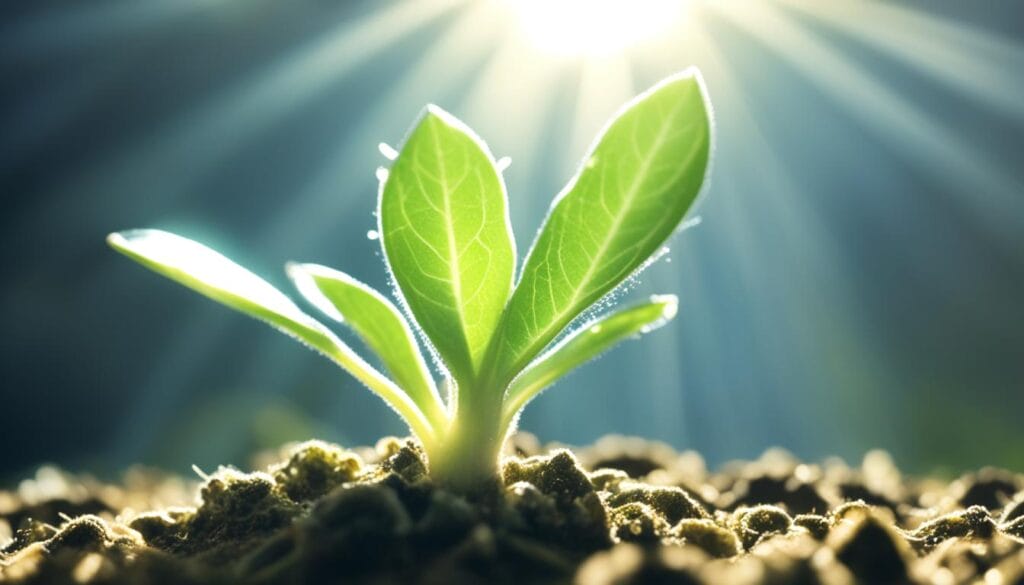
By utilizing the power of seed treatment and adopting a holistic approach to pre-germination techniques, you can set the stage for thriving plants and bountiful harvests. Experiment with different seed treatments and find the ones that work best for your specific seeds and growing conditions. Unlock the potential of your seeds and witness the transformation from germination to flourishing plants.
Harnessing the Power of Seed Imbibition
Seed imbibition is a critical process that kickstarts germination by allowing seeds to absorb water. Understanding the factors that influence seed imbibition and employing techniques to optimize this process can significantly impact the success of your planting endeavors.
When it comes to seed imbibition, water is the key player. The imbibition process occurs as water penetrates the seed coat, triggering the seed to take in water and begin germination. Factors such as seed maturity, temperature, and moisture content can affect the rate and extent of imbibition.
So how can you optimize seed imbibition for successful germination?
Firstly, it’s essential to provide your seeds with an adequate water supply. Ensure that your planting medium or soil is sufficiently moist but not waterlogged. Proper watering practices can create an environment conducive to seed imbibition.
Temperature also plays a crucial role. Most seeds have an optimal temperature range for imbibition. By maintaining the appropriate temperature, you can promote faster and more uniform water absorption. Consult the optimal temperature guidelines for the specific seeds you are germinating.
Techniques to Optimize Seed Imbibition
1. Pre-soaking: Pre-soaking seeds in water for a specific period before planting can initiate the imbibition process. This technique is particularly useful for larger seeds with hard seed coats.
2. Seed scarification: Seed scarification involves scratching or cracking the seed coat to allow water penetration. This process can enhance seed imbibition and improve germination rates, especially for seeds with hard or impermeable seed coats.
3. Stratification: Stratification involves subjecting seeds to specific temperature and moisture conditions to simulate natural winter conditions. This technique can help break seed dormancy and enhance imbibition, particularly for seeds that require a cold period to initiate germination.
4. Moisture management: Maintaining consistent moisture levels during the imbibition process is crucial. Ensure that the seeds have access to moisture while avoiding excess water, as it can lead to fungal growth or rot.
5. Seed treatments: Seed treatments, such as seed coatings or priming, can enhance imbibition by providing a protective barrier that retains moisture around the seed. These treatments can also include beneficial substances that promote germination.
By harnessing the power of seed imbibition and employing these techniques, you can set the stage for healthy growth and development of your plants. Remember to consider the specific needs of the seeds you are germinating and adapt your techniques accordingly for optimal results.
Germination Enhancement: A Holistic Approach
When it comes to seed germination, a holistic approach that combines multiple pre-germination techniques is the key to achieving optimal results. By integrating priming, scarification, stratification, and imbibition techniques, you can enhance germination rates and give your seeds the best chance of successful growth.
Priming: Unlocking the Potential
Seed priming, a process of conditioning seeds before planting, can significantly improve germination rates. Through controlled hydration and dehydration, priming enhances seed vigor and accelerates the germination process. By providing the ideal moisture conditions, you can pre-germinate your seeds and establish a strong foundation for robust plant growth.
Scarification: Breaking Barriers
Seed scarification stimulates germination by breaking down hard seed coats and overcoming dormancy. Mechanical scarification or chemical treatments can help weaken the seed coat, allowing water and oxygen to penetrate and activate germination. By effectively scarifying your seeds, you can remove barriers and promote successful germination.
Stratification: Providing the Optimal Environment
Stratification involves subjecting seeds to specific temperature and moisture conditions to overcome dormancy. Cold, warm, or moist stratification methods are used to mimic the natural conditions seeds require for germination. By properly stratifying your seeds, you create an environment that triggers the germination process and ensures consistent and vigorous growth.
Imbibition: Initiating Germination
Seed imbibition is the process in which seeds absorb water and trigger metabolic changes necessary for germination. Providing seeds with adequate moisture and favorable temperature conditions is crucial for successful imbibition and subsequent germination. By understanding the factors that influence imbibition, you can optimize this process and set your seeds up for germination success.
By integrating these pre-germination techniques harmoniously, you can create an optimal environment for your seeds and enhance germination rates. Each technique plays a vital role in overcoming barriers to germination and promoting healthy seedling development. Whether you are starting seeds indoors or directly in the garden, take a holistic approach to seed germination enhancement and unlock the full potential of your plants.
Creating the ideal conditions for seed germination is crucial for successful planting. In the next section, we will summarize the core concepts of pre-germination techniques and discuss their practical application. Stay tuned for valuable insights that will empower you to maximize your seeds’ potential.
Conclusion
Mastering pre-germination techniques is essential for unlocking the full potential of your seeds. At SeedsHereNow.com, we provide expert tips and tricks that offer valuable insights into various pre-germination methods such as seed priming, scarification, soaking, stratification, dormancy break, imbibition, treatment, and germination enhancement. By implementing these techniques, you can pave the way for healthier and more productive plants.
Embrace the power of pre-germination techniques to ensure successful planting and witness the rewards of flourishing gardens. Whether it’s seed priming for quicker and more uniform germination, scarification to break seed dormancy, soaking to improve germination rates, or stratification to overcome dormancy challenges, each technique plays a crucial role in setting up your seeds for success.
By harnessing the knowledge and expertise provided by SeedsHereNow.com, you can confidently apply these pre-germination techniques to enhance your seeds’ germination process, ensuring robust growth and thriving plants. With an effective combination of pre-germination techniques, you’ll unlock the true potential of your seeds and create a thriving garden that’s the envy of your neighborhood. Start mastering pre-germination techniques today and reap the benefits of healthy, vibrant plants.
Now that you know how to pre-germinate seeds, get your garden started today by shopping the collection of regular, feminized, and autoflower cannabis seeds at Seeds Here Now.
FAQ
What are pre-germination techniques?
Why should I use pre-germination techniques?
How does seed priming work?
What is seed scarification?
How does seed soaking benefit germination?
What is seed stratification?
How can I break seed dormancy?
What is seed treatment?
What is seed imbibition?
How can I enhance seed germination?
Back

